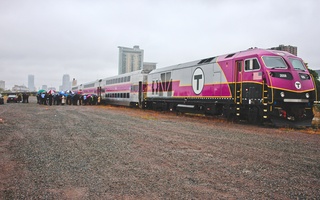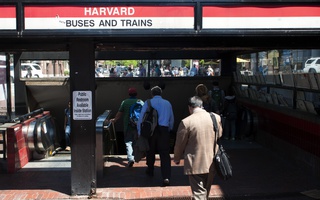The MBTA’s announcement last week of its plans to build a new commuter rail station in Allston met with widespread approval from community members and the University, and for good reason. The construction of the descriptively named West Station is a step forward in the MBTA’s attempts to expand its service to underserved sections of the city, and Harvard’s commitment to finance a third of the project is a sign of the University’s interest in its relationship with Allston. Still, as with any public works project, the devil is in the details. While a laudable improvement, West Station must be part of a wider campaign to revamp the MBTA.
Fortunately, such a campaign is afoot, albeit in embryo. The MBTA’s decision to build West Station is taking place in the context of a five-year capital plan, released in January, which promises to expand the Green Line, refurbish the Red, Orange Lines, and Silver Lines, and finish creating the new Indigo Line, an expansion of the Fairmount Line of the commuter rail into some of Boston’s most underserved communities. The plan also incorporates the realignment of the Massachusetts Turnpike in Allston, a proposal that frees up Harvard land and makes the building of West Station possible.
Improved service will bring with it several boons for affected areas. Property values are likely to increase, and the communities will become more connected to the city proper. So long as they are equitably distributed, such benefits are particularly overdue in Allston, whose residents have long had train tracks nearby but no easy way of getting downtown. And with more land from the Turnpike realignment, the area stands to gain more vibrant public space. As Massachusetts Transportation Secretary Richard A. Davey said at the station’s opening, “It’s about a neighborhood.”
But that neighborhood, along with the rest of the city, has reason to demand more from the MBTA. West Station will be a commuter rail station, and its line, as the Boston Globe noted, “runs … sporadically” at non-peak hours. Change may be coming: The MBTA plans to introduce “diesel multiple unit” cars, or DMUs, on the new Indigo line, and has unspecified plans to do the same for the Worcester/Framingham line on which West Station will sit. In theory, these cars will make service more like rapid transit.
Even more basic changes, however, may deliver more substantial improvements. Harvard’s Edward L. Glaeser, the Fred and Eleanor Glimp Professor of Economics and Director of the Taubman Center for State and Local Government and the Rappaport Institute of Greater Boston, explained on Bloomberg View in 2012 that “Bus Good, Train Bad” is a decent summation of transportation economics. With that in mind, the MBTA should attempt to use buses more creatively in more of the city, including in Allston, where better bus service to the city could supplement the commuter rail and help prevent overcrowding.
Boston’s Silver Line system in Roxbury could be a model. But, as Professor Glaeser noted this March in the Boston Globe, it needs serious refurbishment – as could much of the rest of the MBTA. Seen in this context, West Station is still a significant benefit for Harvard, and for an Allston community that has long seen its transit needs go unmet. But more widespread rethinking is necessary for the MBTA to connect the Greater Boston community more equitably and efficiently.
Read more in Opinion
Give Clean a ChanceRecommended Articles
-
Cambridge Autos Get Place to ParkParking your car around the Square will soon be a little easier. Cambridge City Manager James L. Sullivan told the
-
MBTA To Extend Late-Night Weekend Service HoursAfter years of frustrating college students into cabs or an early return from nights out in Boston, the MBTA will run all of its subway trains and most popular bus routes until 3 a.m. on Saturdays and Sundays beginning next spring, the Boston Globe reported on Monday.
-
 BU Was Prepared To Fund Allston 'West Station'
BU Was Prepared To Fund Allston 'West Station' -
 Kennedy School Fellow Proposes Reforms to the T
Kennedy School Fellow Proposes Reforms to the T -
 Students, Alumni Concerned Over Potential MBTA Cuts
Students, Alumni Concerned Over Potential MBTA Cuts













